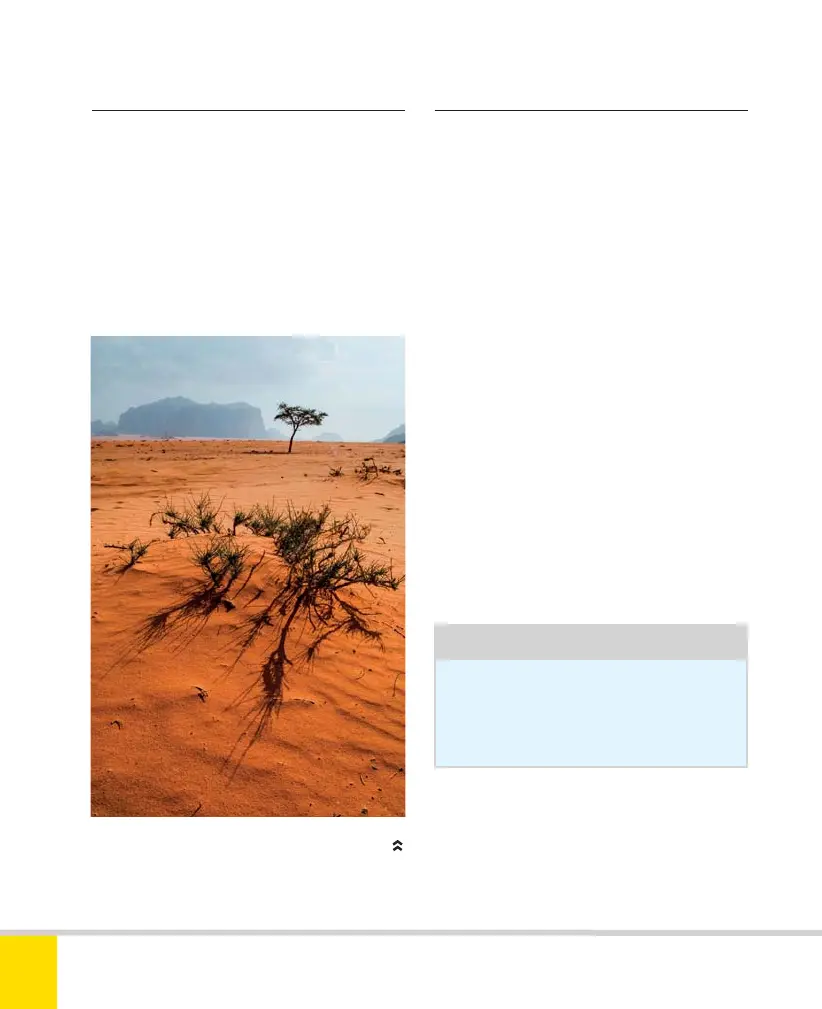Free ebooks ==> www.ebook777.com
The D5300’s smaller sensor, relative to the
35mm/FX standard, means that it has a
crop factor, or focal length magnification
factor, of 1.5. If you fit a 200mm lens to a
D5300, the field of view equates to what
you’d see with a 300mm lens on a full-
frame camera (e.g. D4 or D600). For sports
and wildlife this can be an advantage,
allowing long-range shooting with
relatively light and inexpensive lenses.
Conversely, the crop factor makes wide-
angle lenses effectively less wide, which is
unwelcome news for landscape shooters.
However, this has fostered the
development of new ultra-wide lenses,
like the 10–24mm f/3.5–4.5G DX Nikkor.
The page opposite shows a series
of images taken on a Nikon D5300, from
a fixed position, with lenses from 12mm
to 300mm.
Tip
Throughout this book, and specifi cally
in the shooting details for the photos,
the true focal length is used.
›
Crop factor
›
Field of view
The field of view, or angle of view, is the
area covered by the image frame. While
the focal length of a lens remains the same
on any camera, the angle of view seen in
the image is different for different sensor
formats. The angle of view is usually
measured on the diagonal of the frame
(as in the table on pages 202–207).
DESERT
A wide-angle lens helps to accentuate the
vastness of the desert in this shot. 18mm,
1/125 sec., f/13, ISO 250.
188
NIKON D5300
7
Nikon D5300 Ch7 184-207 P2 RY.indd 188Nikon D5300 Ch7 184-207 P2 RY.indd 188 19/02/2014 17:0819/02/2014 17:08

